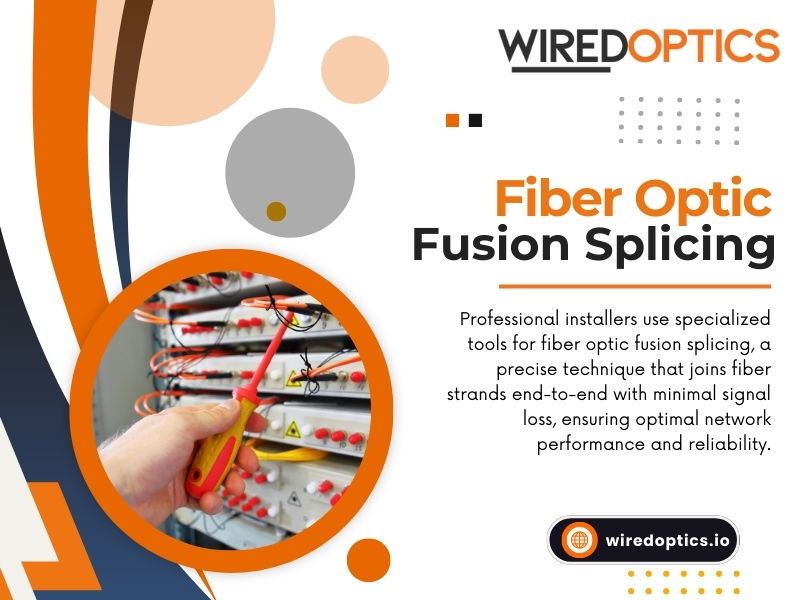Fiber Optic Fusion Splicing
Top Signs Your Fiber Optic Cable Needs Repair and What to Do About It!
Noticing the early signs of fiber optic repair can protect your network from costly downtime and performance issues. Fiber optic cables are known for their speed, reliability, and efficiency, but like any technology, they can cause problems.
Knowing what to look for can help you address potential issues before they impact your operations; here are the top signs your fiber optic cable may need repair and steps you can take to fix it.
1. Decreased Signal Quality or Slow Speeds
A key indicator of problems with fiber optic cables is a notable drop in signal quality or slower data speeds than normal.
Fiber optic cables are designed to transmit data at high speeds with minimal loss, so any noticeable slowdown often indicates a problem.
Slow speeds could be due to physical damage, such as bends, cable breaks, or connector issues. If you notice a drop in performance, consider having a professional examine the cable’s integrity to identify and fix any damage.
2. Frequent Connection Drops
Another clear indicator of fiber optic cable issues is intermittent connection losses. Fiber optic cables offer stable connectivity, so if you’re experiencing frequent disconnections, there might be a problem with the cable itself.
Physical damage, moisture exposure, or interference from other cables can cause discontinuous drops.
A professional inspection can identify the cause and prevent further connection issues.
3. Visible Physical Damage
Fiber optic cables are durable but not indestructible. Physical damage can impact data transmission, such as visible cuts, kinks, or excessive bending. Damage often occurs due to mishandling, accidental pressure, or environmental factors.
If you see any visible damage to the cable’s exterior, schedule a repair immediately.
Damaged cables affect performance and can be a safety hazard in specific settings.
4. High Attenuation Levels
Attenuation, or signal loss over distance, is typically low in fiber optic cables. However, if you’re experiencing higher-than-normal attenuation, it may indicate that the cable has sustained damage or is poorly installed.
Excessive bending, stretching, or incorrect Fiber optic fusion splicing can all increase attenuation.
You may need specialized equipment or a fiber optic repair professional to diagnose this issue, test the signal levels, and identify the problem areas.
What to Do When You Notice These Signs?
If you observe any of these signs, you must act quickly to prevent further damage and potential downtime. Here are some steps to take:
- Inspect the Cable: Check each end of the fiber optic cable for visible damage or loose connections.
- Consult a Professional: Fiber optic cables are complex and sensitive to improper handling. Consulting a certified technician ensures the repair process is handled correctly and minimizes the risk of further damage.
- Schedule Regular Maintenance: Regular inspections and maintenance can catch potential issues before they become significant problems, helping to extend the lifespan of your fiber optic cables.
Conclusion
Recognizing the signs that your fiber optic cable needs repair can help you maintain a reliable and efficient network.
Addressing issues like signal loss, connection drops, physical damage, and high attenuation early on can prevent costly repairs and ensure smooth operations.
Don’t wait until minor issues become significant disruptions—take proactive steps to keep your fiber optic network in top shape!
Whether you need fiber optic installation or repair, WireOptic sis here to help! Our team of experts is equipped with the skills and tools to handle all aspects of fiber optic maintenance, ensuring your network runs at its best.
Contact WireOptics today for reliable, professional fiber optic solutions you can trust!
Find Us on Google Map: (Wired Optics)

